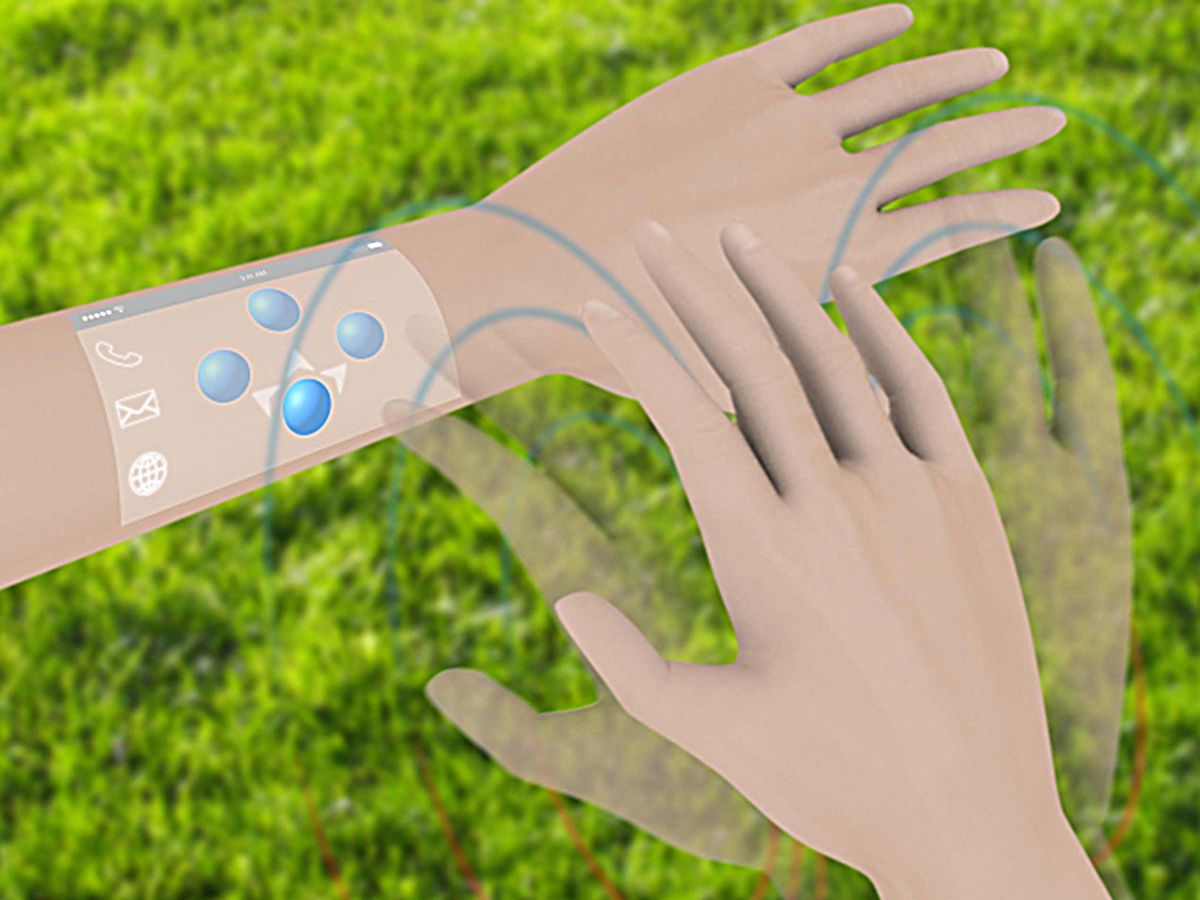When it comes to virtual reality systems, sensors that “fit like a glove” aren’t good enough anymore. Now, we want such sensors to fit more like skin. That’s what researchers have accomplished in a paper published today in Science Advances.
Denys Makarov at Helmholtz-Zentrum Dresden-Rossendorf, in Germany, and his colleagues have engineered a magnetosensitive electronic skin, or e-skin, with directional perception. The device can track the subtle motions of the human hand, and is so thin and flexible that it is tangibly imperceptible.
The e-skin could be a substitute for the bulky, often motion-restraining gloves of virtual reality environments, the researchers say. It could also enable a user to interact, using mere gestures, with everyday objects in the physical world and in augmented reality applications.
Makarov and his Ph.D. student Gilbert Santiago Cañón Bermúdez say that in addition to gaming, they envision applying the technology to software design, business, physical therapy, and security.
“Imagine that you want to press a button that is located in a restricted environment that you can’t touch. You would have to use some touchless means of interacting with this button,” says Makarov. “A combination of magnetic field sensors and permanent magnets can do this job.”
When placed on a user’s hand, the e-skin tracks its position and turning motion in relation to the angle of an external magnetic field. The information is sent to a computer where the motions are digitally reconstructed and translated into a function or command.
The team demonstrated the e-skin’s capability by having a user dim an image on a computer screen and type keyboard characters, all without touching anything. In the light dimming demo, a plastic ring with a permanent magnet in the middle represents a dial for dimming a lightbulb. The user places a sensor on her palm, holds her hand above the dial, and rotates her hand as if she were turning the knob, but without touching it. A computer connected to the sensor translates that information and dims a light-source image on a screen.
In the virtual keypad demonstration, the sensor is placed on a wristband and a tiny magnet is placed on the fingertip of the opposite hand. The user can choose one of four keyboard characters by positioning her fingertip above, but not touching, four different areas of the wrist sensor that represent the characters.
Makarov’s team built the sensor using miniaturized magnetosensitive components arranged in a novel way. “It’s the placement and packaging of a high performance spin valve stack in a Wheatstone bridge on ultrathin foils—that’s where a lot of know-how came,” says Cañón Bermúdez.
Using magnetic fields to track movement is not new in virtual reality. Scientists at Oculus Research and the University of Washington demonstrated fingertip-size magnetic sensors for virtual reality in a system called Finexus. And a startup called Ommo is developing a pair of gloves with embedded magnetic sensors for hand-motion tracking.
Those devices are an elaboration on conventional magnetic sensors, which involve bulky materials, says Makarov. “The difference is that our device does not restrain motion due to its unique mechanical properties of thinness and extreme flexibility,” he says.
The concept of e-skin, or artificial skin, isn’t new either. Such devices have been built for a range of functions, from monitoring health conditions, vital signs, and temperature changes to making more-sensitive prosthetic hands. Makarov’s team in 2015 demonstrated e-skin with proximity sensing, which imitates touch. But that previous system didn’t have directional perception of turning-type movements.
Makarov’s new prototype is the first to shrink magnetosensing into e-skin materials with directional perception. It does not require a direct line of sight between a virtual object and the sensors, unlike optical approaches.
Indeed, Makarov hopes the system, like many e-skins, will have medical applications as well. For example, the sensors could be placed on the skin and aligned with joints to monitor patients undergoing rehabilitation after orthopedic surgery, he says.
Having to put a permanent magnet on objects in order to alter the magnetic field profile of its environment is not always practical for everyday life. So the next step for Makarov is to eliminate the need for permanent magnets and instead rely on geomagnetics—Earth’s magnetic fields—to track positioning. “This is something for which our community has been waiting for a long time and is the topic of our current development,” Makarov says. “We’re very close.”
After all, bacteria, insects and even birds and sharks can perceive geomagnetic fields and use them for orientation and navigation. Some of us humans would like to be able to do that too.
Emily Waltz is a features editor at Spectrum covering power and energy. Prior to joining the staff in January 2024, Emily spent 18 years as a freelance journalist covering biotechnology, primarily for the Nature research journals and Spectrum. Her work has also appeared in Scientific American, Discover, Outside, and the New York Times. Emily has a master's degree from Columbia University Graduate School of Journalism and an undergraduate degree from Vanderbilt University. With every word she writes, Emily strives to say something true and useful. She posts on Twitter/X @EmWaltz and her portfolio can be found on her website.



